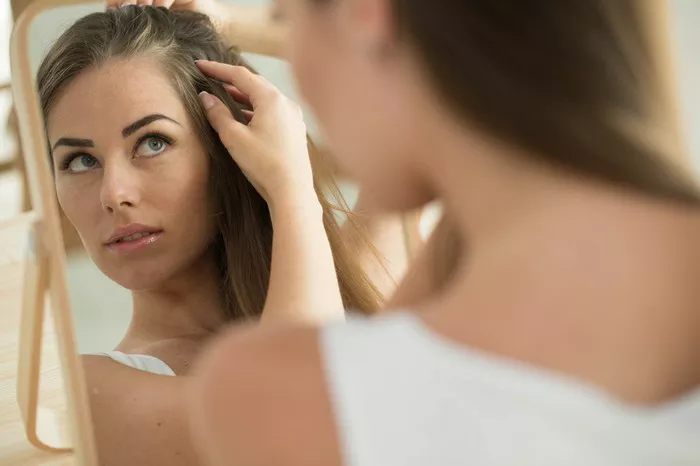Hair loss can have a significant impact on a person’s self-esteem and confidence. For those with fine hair, the struggle to achieve volume and thickness can feel like an uphill battle. Fortunately, advancements in hair care and hair health have provided numerous solutions to address thinning hair and receding hairlines. In this article, we will explore effective strategies to thicken fine hair, including deep conditioning treatments, lifestyle changes, and professional interventions.
What Is Fine Hair?
Fine hair refers to the diameter of individual hair strands, which is thinner compared to medium or coarse hair. It’s important to note that fine hair is not the same as thin hair, which refers to the density of hair follicles on the scalp. People with fine hair often face challenges like lack of volume, difficulty holding styles, and increased susceptibility to damage.
Common Causes of Fine Hair
Genetics play a significant role in determining hair texture. Aging can also lead to finer hair strands over time. Hormonal changes, such as those caused by thyroid imbalances or menopause, can further impact hair thickness. Additionally, poor hair care habits, like over-styling and using harsh chemicals, can weaken fine hair.
How to Thicken Fine Hair: Proven Strategies
1. Choose the Right Hair Products
Using the correct products is crucial for thickening fine hair. Look for lightweight, volumizing shampoos and conditioners that won’t weigh your hair down. Volumizing shampoos cleanse the scalp and add lift at the roots, while lightweight conditioners hydrate without leaving residue. Hair thickening sprays can temporarily coat hair strands, making them appear thicker.
2. Incorporate Deep Conditioning Treatments
Deep conditioning is essential for maintaining hair health, especially for fine hair. These treatments strengthen the hair shaft, reduce breakage, and improve elasticity. DIY masks made of avocado, honey, and coconut oil provide natural hydration, while protein treatments repair damaged hair and add strength to fine strands.
3. Avoid Overwashing Your Hair
Washing your hair too frequently can strip it of natural oils, leaving it dry and brittle. Aim to wash your hair 2-3 times a week to maintain its natural moisture balance. Dry shampoo can be used between washes to absorb excess oil and add volume. Always use lukewarm water, as hot water can damage fine hair.
4. Be Gentle When Styling
Fine hair is more prone to damage, so handle it with care. Avoid aggressive brushing and opt for wide-tooth combs instead. When using heat styling tools, always apply a heat protectant spray to minimize damage. Tight hairstyles like ponytails or braids can stress the hairline and lead to breakage, so opt for looser styles.
5. Eat a Hair-Healthy Diet
Your diet plays a significant role in hair health. Incorporate foods rich in vitamins and minerals that promote hair growth and thickness. Protein is essential for hair health, as hair is made of keratin, a type of protein. Include eggs, fish, and lean meats in your diet. Vitamins A and C support sebum production and collagen, which are essential for healthy hair. Omega-3 fatty acids, found in fish and flaxseeds, nourish the scalp and hair follicles.
6. Stay Hydrated
Dehydration can make your hair dry and brittle. Drink plenty of water to keep your hair hydrated from the inside out. Proper hydration supports overall hair health and can improve the appearance of fine hair.
7. Try Hair Thickening Supplements
Supplements can provide the nutrients your hair needs to grow thicker and stronger. Look for products containing biotin, collagen, and vitamins like B12 and D. Biotin is known for promoting hair growth and thickness, while collagen strengthens hair and improves elasticity.
8. Protect Your Hair from Environmental Damage
Sun exposure, pollution, and chlorine can damage fine hair. Take steps to protect your hair from these elements. Wear a hat to shield your hair from the sun’s harmful UV rays, and rinse your hair immediately after swimming to remove chlorine or saltwater.
9. Massage Your Scalp Regularly
Scalp massages improve blood circulation, which can stimulate hair growth and thickness. Use your fingertips to gently massage your scalp for 5-10 minutes daily. Adding a few drops of rosemary or peppermint oil to your massage routine can provide additional benefits.
10. Consider Professional Treatments
If you’re struggling with severe hair loss or thinning, consult a dermatologist or trichologist. They may recommend treatments like PRP therapy, which uses platelet-rich plasma injections to stimulate hair growth, or laser therapy, which promotes thicker hair. For advanced hair loss, hair transplants can restore your hairline.
Common Mistakes to Avoid
1. Using Heavy Products
Heavy gels, waxes, and oils can weigh down fine hair, making it look flat. Stick to lightweight formulas designed for fine hair.
2. Skipping Regular Trims
Split ends can make fine hair look thinner. Get regular trims every 6-8 weeks to maintain healthy ends and prevent breakage.
3. Overusing Heat Tools
Excessive heat styling can damage fine hair. Limit the use of flat irons and curling wands, and always use a heat protectant spray.
Conclusion
Thickening fine hair requires a combination of proper hair care, a healthy lifestyle, and patience. By following the tips outlined in this article, you can improve your hair health, reduce hair loss, and achieve a fuller, more voluminous look. Remember, deep conditioning, protecting your hairline, and using the right products are key to maintaining beautiful, thick hair. Start your journey to thicker hair today!
Related topics:
- How to Thicken Your Hairline: All You Need to Know
- Why Does My Hair Get Dry Overnight?
- Which Diet is Good for Hair Growth?


